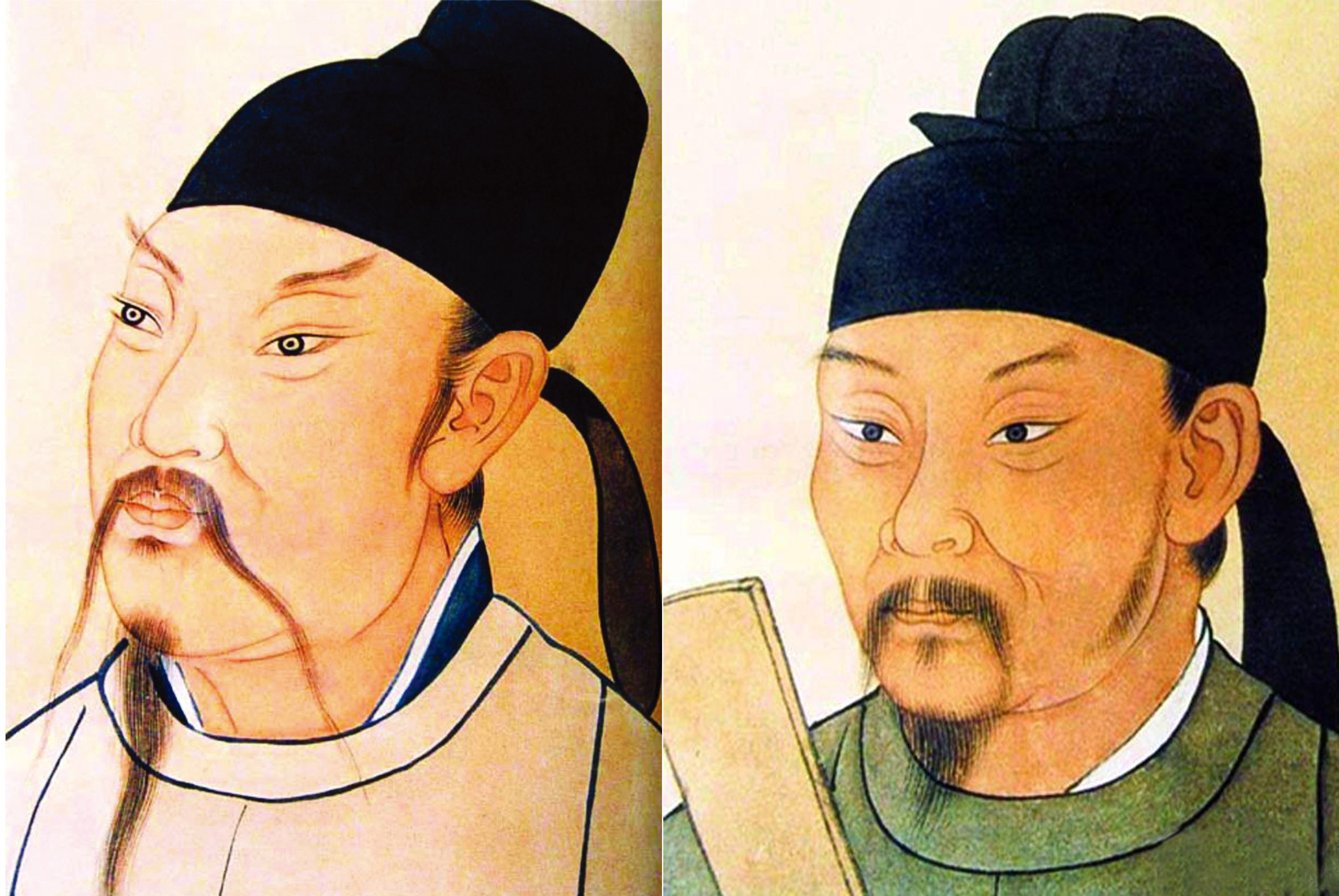Classical poetry searches for place in modern society

Li Bai (also known as Li Bo or Li Taibai, left) and Du Fu (also known as Tu Fu, right), both of the High Tang period, were acclaimed from their own day to the present as poets who took classical Chinese poetry to its peak.
Poetry has always been at the core of literary creation in China. Since the beginning of the literary revolution in 1917, classical poetry or “old poetry” written in traditional meter fell under out of favor as it was regarded as a carrier of feudal ideas. It was replaced by “new poetry” in compliance with the trend of pursuing liberation of personality at that time.
Since the reform and opening up, classical poetry has seen a revival among poets. Opposition between old and new poetry has been replaced by into a state of harmony between the two. In promoting traditional Chinese culture, there has been an upsurge of creating classical poetry.
Nature and function
Although now is the best time creating classical poetry since the literary revolution, there are at least three hurdles facing the literary form.
First, there are limitations because its ancient roots tie old poetry closely to the social and cultural context and the mainstream ideology of the time. Fu of the Han Dynasty (206BC-220AD), Folk Songs of the Northern and Southern Dynasties (420-589), poems of the Tang Dynasty (618-907) and Ci of the Song Dynasty (960-1279) all exhibit interactions between poetry creation and the social environment of their times.
Despite the ability of classical poetic forms to transcend time and be employed by modern creators, the style can still only occupy a peripheral position. New poetry should be dominant in poetry creation. The lifting of classical poetry to a higher position is against the law of literary development. Instead, its value as a unique poetic form is lowered.
Second, poets in modern times tried to endow old poetry with all functions of a literary form, while neglecting its uniqueness. In Chinese literary history, every literary form has certain functions. “Poems convey ambition, and articles convey truth” is a saying that reflects that different literary forms perform different functions. Old poetry focuses more on expressing the inner world of the poets and their feelings provoked by mountains and waters and other external objects.
We should not exaggerate the literary function of old poetry. In modern times, old poetry was used to capture the spiritual changes of intellectuals and people’s reflections on common predicaments facing mankind. Nowadays, it should not concentrate on major social events and news.
Aesthetic value of classical poetry
In the current era, old poetry can make adjustments in the following three areas to gain more readers.
First, aesthetic qualities in old poetry should be prioritized in creation. The aesthetics of poetry is what has allowed it to survive until the present day. For literature, especially classical poetry, aesthetics play the core function. The reason that well-known quotes from poems resonate with us is that they reveal the spiritual plight of poets and ordinary people’s life experience, and aesthetics in poems strengthens their effect on readers.
If creators of old poetry shift their focus from exploring intellectuals’ spiritual world and people’s life experiences to social events and current affairs, the distinctive aesthetic qualities in this poetic form will be lost.
Second, old poetry creation should stress traditional meter. In comparison with new poetry, one feature of old poetry is its standardized meter. Tonal patterns, antithesis and rhymes are all fundamental stylistic features of classical poetry, without which classical poetry is no different from new poetry.
Innovations in meter are necessary nowadays to suit modern readers’ habits, yet these innovations should be within the norms of classical poetry, otherwise classical poetry is only ragged verses with little or no artistic value.
Third, old poems created in modern times often lack artistic quality, which is directly related to deficiency in school education of aesthetics since the establishment of the People’s Republic of China. For decades, the country’s literary and artistic education has focused more on the transmission of knowledge, exploration of ideological content and exploiting the social and education functions of literary works, neglecting the aesthetic connotation within the mechanism of literary creation.
If old poetry is to serve as the artistic expression of people’s life experiences and spiritual pursuits, the essence of aesthetics should be present.
Guo Guochang is from the College of Chinese Languages and Literature at Northwest Normal University.
LINK
The poems of “Li Du” are considered some of China’s finest historical literature from the Tang Dynasty. “Li” represents the “fairy poet” Li Bai (701-762), while “Du” represents the “sage poet” Du Fu (712-770). Li Bai left behind more than 900 poems and pieces of prose. His poems were ingenious and unusual, creating great momentum among writers. They had an immense influence on the literature of the late ages and earned Li Bai the title of “Fairy Poet”. His extraordinary confidence, independent personality, unconstrained emotion, and romantic temperament embodied the character and spirit of writers in the High Tang period. Du Fu left behind 1,400 magnificent poems that documented the decline of Tang society over a period of about 20 years. His poems combined narration, argument, and song writing. His work had a profound impact on Chinese poetry. Du Fu was very clever and diligent and by the age of 7, had written his first poem. He was also very ambitious and, at the age of 19, began to travel extensively during the height of the Tang Dynasty. His experiences left us the famous line “When shall I reach the top and hold all mountains in a single glance?”
